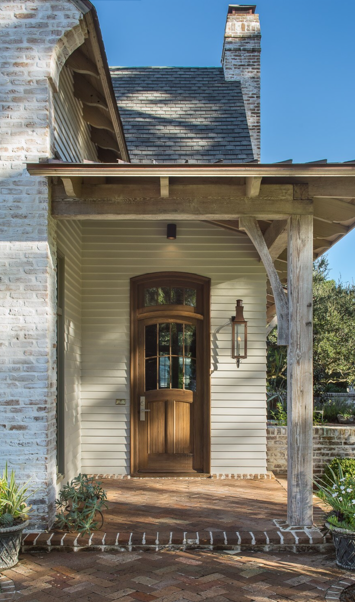BY JAMES MCCOWN
Nestled on the Eastern Shore above the cliffs and soft sand of Mobile Bay stands the languid quiet community of Fairhope, Alabama, often referred to as the “Carmel of the South” because of its charm and vibrant arts community. It is a small town that proudly displays its entry corridor with multiple American flags and is home to growing families, artists, intellectuals, and retirees.
Tourists, and Yankee and Midwest snowbirds, flock to Fairhope winter, spring, summer, and fall. It is a geographic sweet spot: far enough south that snow and bitter cold are rare but just far enough north to experience four distinct seasons. Its beautiful, meandering bay front is experienced via a winding road that begins in the quaint town center and continues south to Battles Wharf and Point Clear, the latter being the home of the queen of Southern resorts, The Grand Hotel. The entire Eastern Shore of Mobile Bay is a cornucopia of southern flora, azaleas, magnolias, honeysuckle, all thriving in the subtropical air.
And finally, not the least of Fairhope’s attractions is a wealth of restaurants, galleries, antique shops, and clothing stores, like East Bay Clothiers and Aubergine, to name only two.
Robin Wylly McCown, Creative Director of The McCown Collection and a native of Alabama, recently helped to procure art for a Fairhope couple with four grown children and 11 grandchildren, all of whom live in nearby Spanish Fort, Point Clear, and Mobile.
The couple’s home, which is their fourth but one they consider to be their favorite, exudes architectural warmth and significance with old Alabama brick recaptured from an original grotto on the beautiful campus of Spring Hill College in Mobile.
The homeowner, a highly respected commercial builder and founder of Vance McCown Construction, dug up and repurposed 500-year-old cypress beams that once stood as dock piers nearly 200 years ago. The wood was salvaged while constructing the foundation of the Mobile Maritime Museum. That very same wood was used to fabricate all of the exterior doors.
Heart Pine beams were salvaged from an 1800s cotton seed warehouse and used for the structural beams, the interior doors, and re-sawn in 14” widths for flooring and wall paneling. Salvaged barn wood, wormy chestnut from the Carolinas, is used for the kitchen cabinets and surrounds. The porch floor, 2×8 rough-sawn Heart Pine was also salvaged from the framing members of an 1803 Mobile Bay home.
”We wanted to make our house a welcoming home and looked to Robin for artistic direction,“ say the owners, whose son, Robert McCown, designed the home.
“Family is everything to us, so looking to our son for the architecture and our cousin Robin for artistic direction just made sense, as our family comes from a long line of builders, architects, and creative people. We wanted warmth and intimacy knowing that our home was created for family and by family.”
The main feature of the 10-foot-high living room is a secretary that came from the couple’s grandparents’ home at 1204 Government Street in the Garden District of Mobile. The piece originally came from a Jesuit residence in Grand Coteau, Louisiana, which has significance for the couple because two of their uncles belonged to the Jesuit order.
“That heirloom is what our home was built around—that and the portrait of our now grown children painted by New Orleans artist Charles Richards,” share the couple.
As creative director of The McCown Collection, it was Robin’s goal to select pieces that would bring warmth and, at the same time, complement the cherished family furniture. ”I love it when every piece tells a bit of a story,” Robin says.
The dining room set, Chinese Chippendale, is accompanied by a 1905 Picasso dry-point etching and other etchings and drawings by Jacques Villon, August Biehle, and Stanley William Hayter. The glowing shining white gold leaf frames beautifully complement the wood paneling and handsomely beamed ceiling.
The large bold abstraction that Robin installed in the family room speaks to owner Teresa’s Spanish roots: ”It feels like a bull fight—it is strong and fierce—yet really beautiful and contemporary at the same time,” reveals Robin.
To complete their home, where they welcome all of their grandchildren, the couple created children’s sleepover quarters, which include child-friendly art, twin beds, and a crib.
”Southerners have great style—no question,” says Robin. “What I love most about working with my Southern clients is their appreciation of the past. Love of family and family memories are everything! And family pieces, no matter how minor or important, are kept, cherished, and saved for generations. My job is easy when it comes to complementing what is most relevant. I like to think that the art pieces I help to procure will, too, become ‘family heirlooms’ and be cherished for years to come.”




















